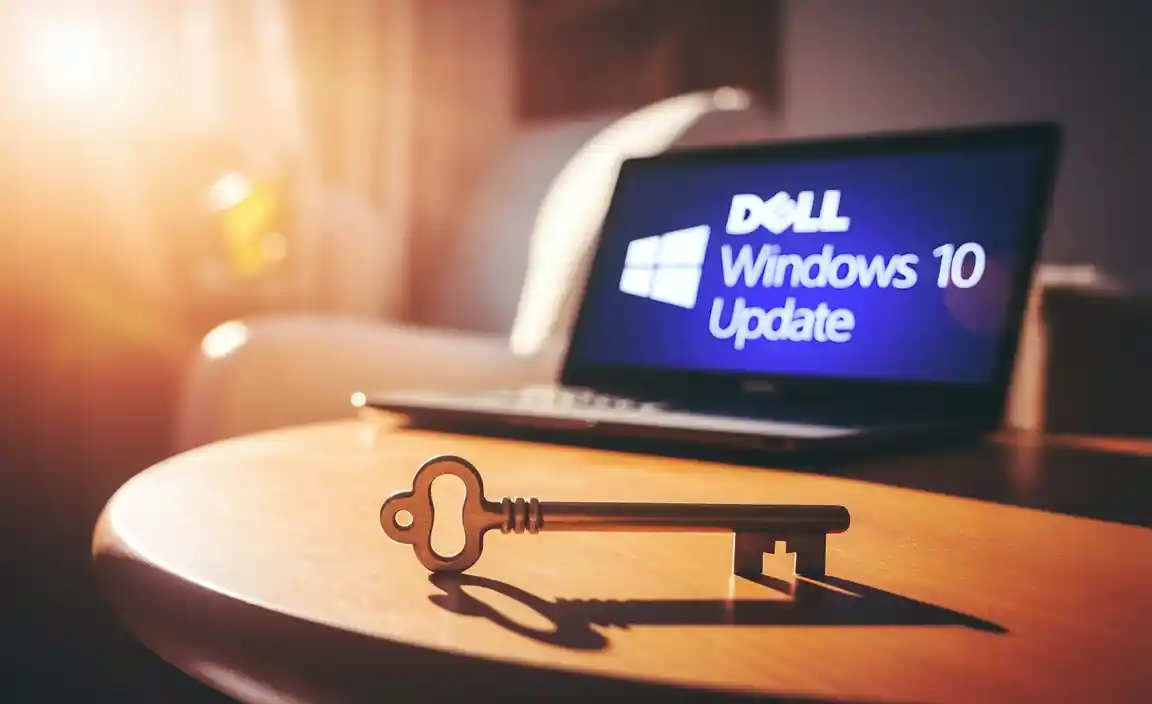Windows 10 update for Dell devices doesn’t always arrive without its quirks. While Microsoft diligently rolls out patches and feature upgrades to enhance security, performance, and user experience on its flagship operating system, the specific hardware implementations, like those found in Dell laptops and desktops, can sometimes present unique challenges. Whether it’s a driver conflict, a compatibility issue with pre-installed Dell software, or a hardware-specific glitch, users may encounter situations where a standard Windows update just doesn’t play nicely with their Dell machine. Fortunately, Dell often provides dedicated support and specialized fixes to ensure a smoother update process.

When you encounter an issue after a Windows 10 update for Dell systems, the first and most crucial step is to identify specifically what is going wrong. Is your Wi-Fi no longer connecting? Is your audio cutting out? Are you experiencing a blue screen of death upon startup? Pinpointing the symptom will significantly help in finding the right solution. Often, the problem isn’t with Windows 10 itself, but rather how the new operating system version interacts with older or specific Dell drivers that haven’t been updated to be fully Windows 10 compatible.
Understanding Dell’s Role in Your Windows 10 Update Experience
Dell, as a major hardware manufacturer, works closely with Microsoft to ensure their devices are compatible not only with the latest Windows releases but also with critical updates. This collaboration involves testing, developing, and releasing drivers and firmware updates that are specifically tailored for their hardware. This is where the concept of an “exclusive fix” becomes relevant. While Microsoft provides the core operating system patch, Dell often provides the accompanying software pieces that make that patch work flawlessly on their specific machines.
When a Windows 10 update for Dell introduces a bug, it’s not uncommon for Dell to release a driver update that addresses the issue. These updates can be delivered through several channels. The most common is Dell’s own update utility, often called Dell Update or Dell SupportAssist. These applications are designed to scan your system, identify your specific Dell model, and then check for available driver, firmware, and BIOS updates directly from Dell’s servers. This proactive approach can often prevent update-related problems before they even arise.
Troubleshooting Common Windows 10 Update Issues on Dell Hardware
If you’ve experienced a problem after a Windows 10 update for Dell computers, here are some common troubleshooting steps you can take:
Run Windows Update Troubleshooter: This built-in Windows tool can automatically detect and fix common update-related issues. Access it by going to Settings > Update & Security > Troubleshoot > Additional troubleshooters > Windows Update.
Check for Dell-Specific Updates: As mentioned, Dell’s update utilities are invaluable. Ensure you have Dell Update or SupportAssist installed and run a full scan. Prioritize driver updates for your network adapter, audio, graphics, and chipset.
Update Drivers Manually from Dell’s Website: If the auto-updaters don’t find anything, visit the Dell Support website. Enter your Service Tag or model number to find the most current drivers for your specific device. Look for drivers released after the Windows 10 update you installed.
Roll Back Drivers: If a specific driver is causing problems, you can try rolling it back to a previous version. Open Device Manager (search for it in the Windows search bar), find the problematic device, right-click on it, select “Properties,” go to the “Driver” tab, and click “Roll Back Driver” if the option is available.
* Uninstall Recent Windows Quality Updates: Sometimes, a particular quality update might be the culprit. You can uninstall recent updates in Settings > Update & Security > Windows Update > View update history > Uninstall updates. Be cautious with this step and only uninstall recent updates if you strongly suspect they are the cause.
The Importance of BIOS and Firmware Updates for Your Dell
Beyond drivers, BIOS and firmware updates are critical for the stability and compatibility of your Dell hardware with Windows 10. These low-level updates can often address significant compatibility issues that affect how your hardware interacts with the operating system and its updates. Dell regularly releases these updates to improve performance, security, and to fix bugs.
When a Windows 10 update for Dell involves significant changes to the operating system’s kernel or hardware interaction layer, a corresponding BIOS or firmware update from Dell might be crucial for seamless operation. It’s always recommended to keep your BIOS and firmware up-to-date, especially before or after a major Windows 10 feature update. Always follow Dell’s instructions carefully when performing BIOS or firmware updates, as an interruption during this process can potentially brick your device.
Staying Ahead of the Curve: Proactive Windows 10 Update Management for Dell Users
For Dell users, a proactive approach to updates is your best defense against post-update woes. Regularly check for driver and BIOS updates from Dell, even if Windows Update hasn’t reported any issues. This can help preemptively address potential conflicts. Furthermore, Windows 10 offers a deferral option for feature updates. This means you can delay the installation of major new versions of Windows 10 for a set period, giving Dell and Microsoft time to iron out any initial bugs that may arise with your specific hardware. This can be a wise strategy, especially for users who rely heavily on their Dell machines for critical work.
In conclusion, while the term “Dell Windows 10 Update Exclusive Fix” might sound complex, it simply refers to the tailored solutions Dell provides to ensure its hardware functions optimally with Microsoft’s operating system. By understanding your device, utilizing Dell’s support tools, and staying informed about available updates, you can navigate the Windows 10 update process with greater confidence and minimize the chances of encountering disruptive issues.
